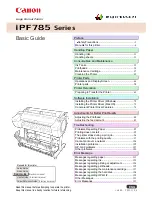
Slic3r
•
Infill
- As fast as you can without compromising the integrity of the
fill structure. Faster extrusions can break and result in weak spots.
•
Solid infill
- The bottom of the model, and any additional solid
layers is usually slightly slower than infill but faster than perimeters.
•
Top solid infill
- Allow time for the extrusion to cleanly cover
the previous top layers and result in a tidy top surface. The last few
layers should have bridged the infill structure nicely, preparing the
way for a neat finish.
•
Support material
- Generally support structures are quick and dirty,
and so long as the base is adequately supported they can be built as
quickly as they can.
•
Bridges
- Having the extrusion span distances depends on the material
and cooling. Going too slow will result in sagging, too fast will result
in broken strands. Experimentation is the key here, but generally
bridging runs slower than perimeters.
•
Gap fill
- Filling in small gaps results in the extruder quickly
oscillating and the resulting shaking and resonance could have a
detrimental affect on the printer. A smaller value here can guard
against this. A setting of zero disables gap filling completely.
•
Travel
- As fast as your printer will allow in order to minimise ooze.
•
First layer speed
- As mentioned in subsection 5.3, the first layer
is important to lay down correctly, and a slower pace helps enormously.
Setting a value of 50%, or even less, can really help.
Acceleration control
is an advanced setting allowing acceleration
settings for perimeters, infill, bridge, as well as a default setting, to be made.
Deciding which values to set depends on the capabilities of the machine.
Any settings within the firmware may be a good starting point.
Take into account any restrictions enforced by the firmware as many
have settings for the maximum safe speed of each axis.
90
Summary of Contents for TAZ 3.0
Page 1: ...TAZ 3 0 User Manual Aleph Objects Inc...
Page 5: ...CONTENTS Index 155 Glossary 159 v...
Page 10: ......
Page 11: ...WARNINGS Safety Information...
Page 14: ......
Page 15: ...Setup Your Printer...
Page 27: ...1 1 HARDWARE SETUP Figure 1 14 Power and USB receptacles Figure 1 15 Power supply 27...
Page 30: ...Setup Your Printer Figure 1 19 Filament Guide Mount Figure 1 20 Filament Guide Setting 30...
Page 31: ...1 1 HARDWARE SETUP Figure 1 21 Axes movement directions Figure 1 22 End stop locations 31...
Page 33: ...Loading Filament...
Page 36: ......
Page 37: ...3D Printer Software...
Page 47: ...Your First 3D Print...
Page 55: ...4 5 Z PRINT HEIGHT Figure 4 5 Nozzle height Figure 4 6 Z end stop trigger 55...
Page 58: ......
Page 59: ...Slic3r...
Page 131: ...Printing with the Graphic LCD...
Page 138: ...Printing with the Graphic LCD GLCD Controller Menu Diagram Figure 6 4 Configuration Menu 138...
Page 139: ...Maintaining Your 3D Printer...
Page 143: ...Advanced Usage...
Page 148: ......
Page 149: ...Hardware and Software Source Code...
Page 151: ...3D Printer Support...
Page 153: ...Contact Information...
Page 161: ......
Page 162: ...Colophon Created with 100 Free Libre Software GNU Linux L A TEX Memoir...
















































